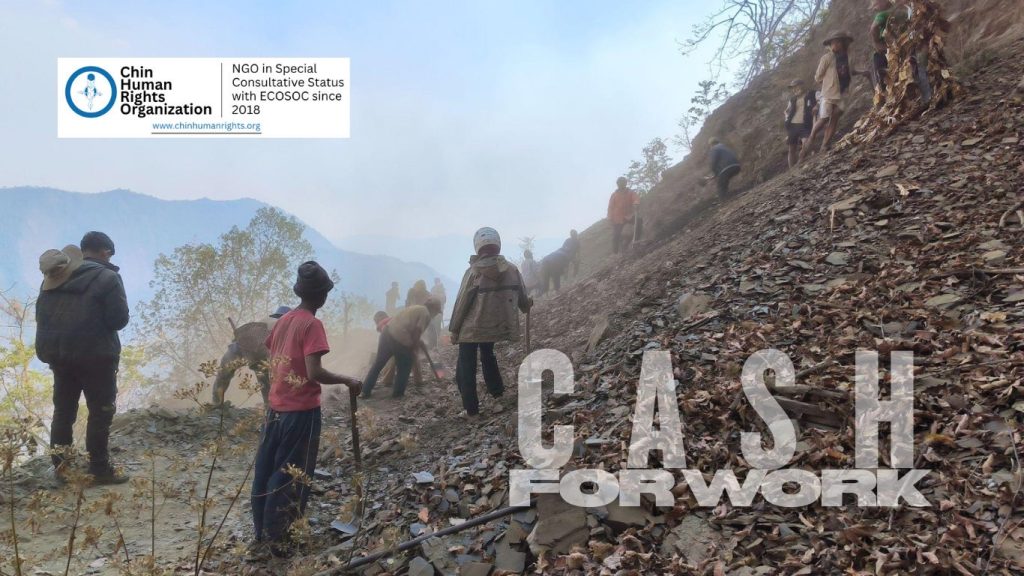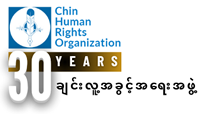Resilience Rooted in Trust, Proximity, and Dignity
In response to the escalating crisis following the 2021 military coup, CHRO transformed its programming to include a full-fledged humanitarian division, recognizing that the protection of human rights cannot be separated from the urgent survival needs of affected communities. Guided by a rights-based approach, CHRO’s humanitarian response evolved from ad hoc relief efforts into a structured, community-led model focused on dignity, equity, and local ownership. As military violence intensified and state institutions collapsed, CHRO expanded its role—not only delivering life-saving aid but also advocating internationally to spotlight humanitarian needs, mobilize support, and navigate informal and formal channels to secure access to hard-hit areas. By leveraging its documentation, local networks, and credibility with global stakeholders, CHRO has become a vital bridge between communities on the ground and the international humanitarian system, ensuring that assistance reaches those most in need while keeping human rights at the center of the response.
Across Myanmar, communities are doing what many might consider impossible—keeping each other alive amidst relentless displacement, violence, and systemic neglect. The story of Chin State is not only one of hardship and destruction, but also of extraordinary courage, solidarity, and self-determination. In the face of ongoing military attacks, mass displacement, and deepening humanitarian crisis, communities have become their own first responders.
At the Chin Human Rights Organization (CHRO), we believe that effective humanitarian response must begin with local leadership. Our approach is grounded in a localization model rooted in trust, proximity, and dignity. Through a network of 13 dedicated local partner organizations, we reach some of the most vulnerable and conflict-affected populations in western Myanmar. These partners are more than implementers—they are the heart of our response. Many are themselves displaced. Many were teachers, health workers, and civil servants who joined the Civil Disobedience Movement and lost their jobs. Yet they continue to serve, even in hardship, as an act of resistance and resilience.
Through this community-based model, CHRO has provided life-saving support to tens of thousands of people: food, medicine, hygiene kits, emergency cash assistance, and education support for children whose learning has been disrupted by war. While psychosocial care is provided through CHRO’s health program, our community resilience work also extends into early recovery. This includes vocational training for displaced youth and women, small livelihood grants, start-up kits, and modest income-generating loans to help families begin rebuilding. These efforts reflect our belief that true humanitarian response must go beyond relief—and help restore the building blocks of daily life.
Over the past three years, CHRO’s Emergency Response & Community Resilience Program has reached nearly 150,000 people across conflict-affected areas of western Myanmar. Our work has focused on areas with the greatest displacement, destruction, and unmet needs, including:
Mindat: 26,298 People
Thantlang: 25,786 People
Paletwa: 19,952 People
Kanpetlet: 14,410 People
These numbers are more than statistics—they reflect lives touched, dignity preserved, and communities supported through flexible, principled, and locally driven action. Our response is guided by direct needs assessments, partner feedback, and visible gaps in humanitarian coverage. Some townships have received consistent support, while others—due to access challenges or fewer partners—have received less. Our goal is always to reach the most vulnerable, wherever they are.
Much of this support is delivered through informal, community-managed routes to hard-to-reach areas. This access is made possible not by formal mechanisms, but through the quiet cooperation of local actors, authorities, and the deep trust built over time. In a country where humanitarian access is highly restricted, this model has kept aid flowing—showing what’s possible when proximity, trust, and local ownership guide the response.
At CHRO, we do not see resilience as something we deliver from the outside. It already exists—in the social fabric, faith, culture, and leadership of our communities. Our role is to reinforce and build upon what is already strong. Over the past three years, CHRO has invested heavily in local partner capacity—training them on humanitarian standards, protection, accountability, and coordination. In 2025, we expanded this work to include emerging community governance actors, embedding Survivor- and Community-Led Response (SCLR) as both a methodology and a long-term outcome.
But the needs are growing. Communities face not only displacement, but hunger, trauma, health risks, and the collapse of public services. Our systems are strong, and our partners are trusted. But our ability to respond is limited by short-term, project-bound funding. Without sustained and flexible investment, it is difficult to bridge emergency response with recovery, education, livelihoods, and long-term well-being. CHRO’s resilience framework spans preparedness, humanitarian response, recovery, local leadership development, and rights protection—but we need the resources to sustain it.

We do not see communities as passive recipients of aid. They are the architects of their own recovery. With the right kind of support—built on trust, proximity, and long-term commitment—we can do more than deliver relief. We can restore dignity, strengthen leadership, and help lay the foundations for a more resilient and just future in Chin State and beyond.
Emergency Response & Community Resilience Program – Humanitarian Division
